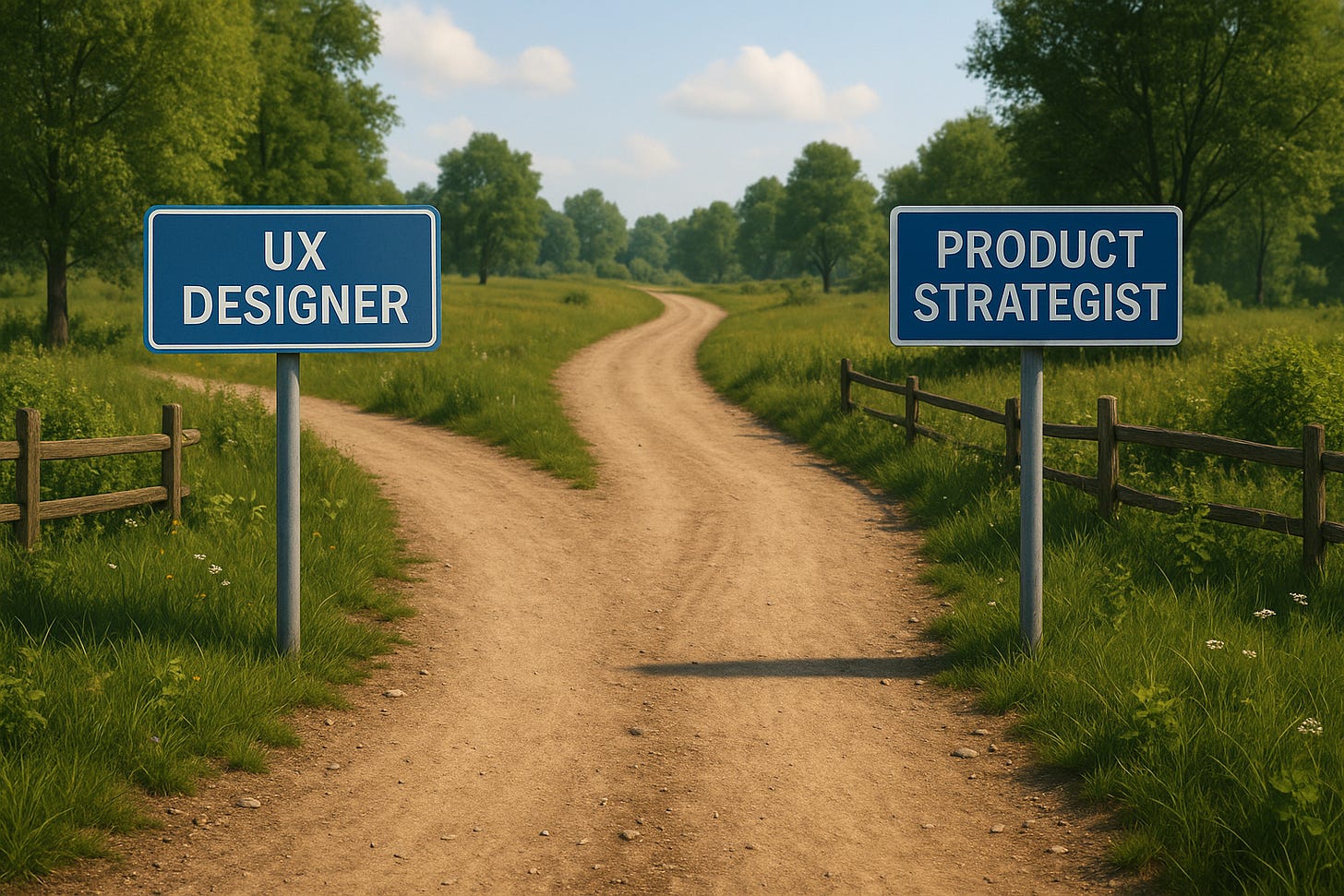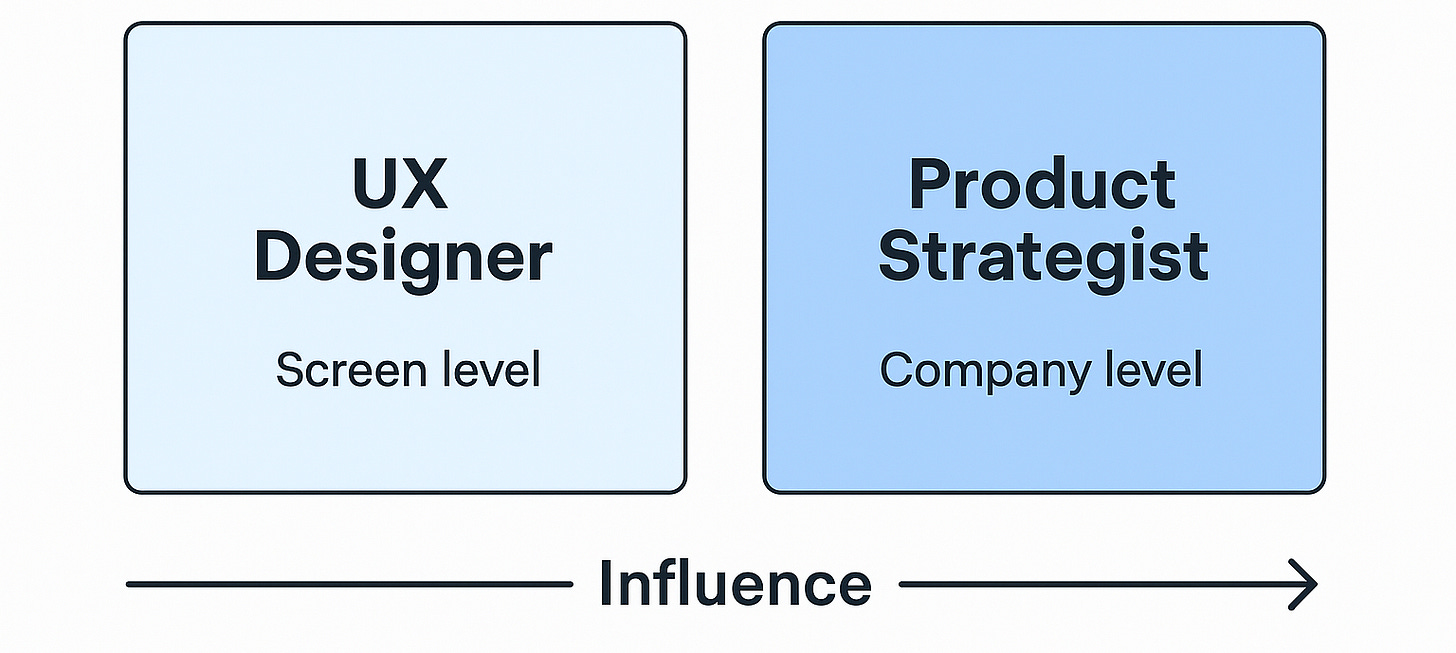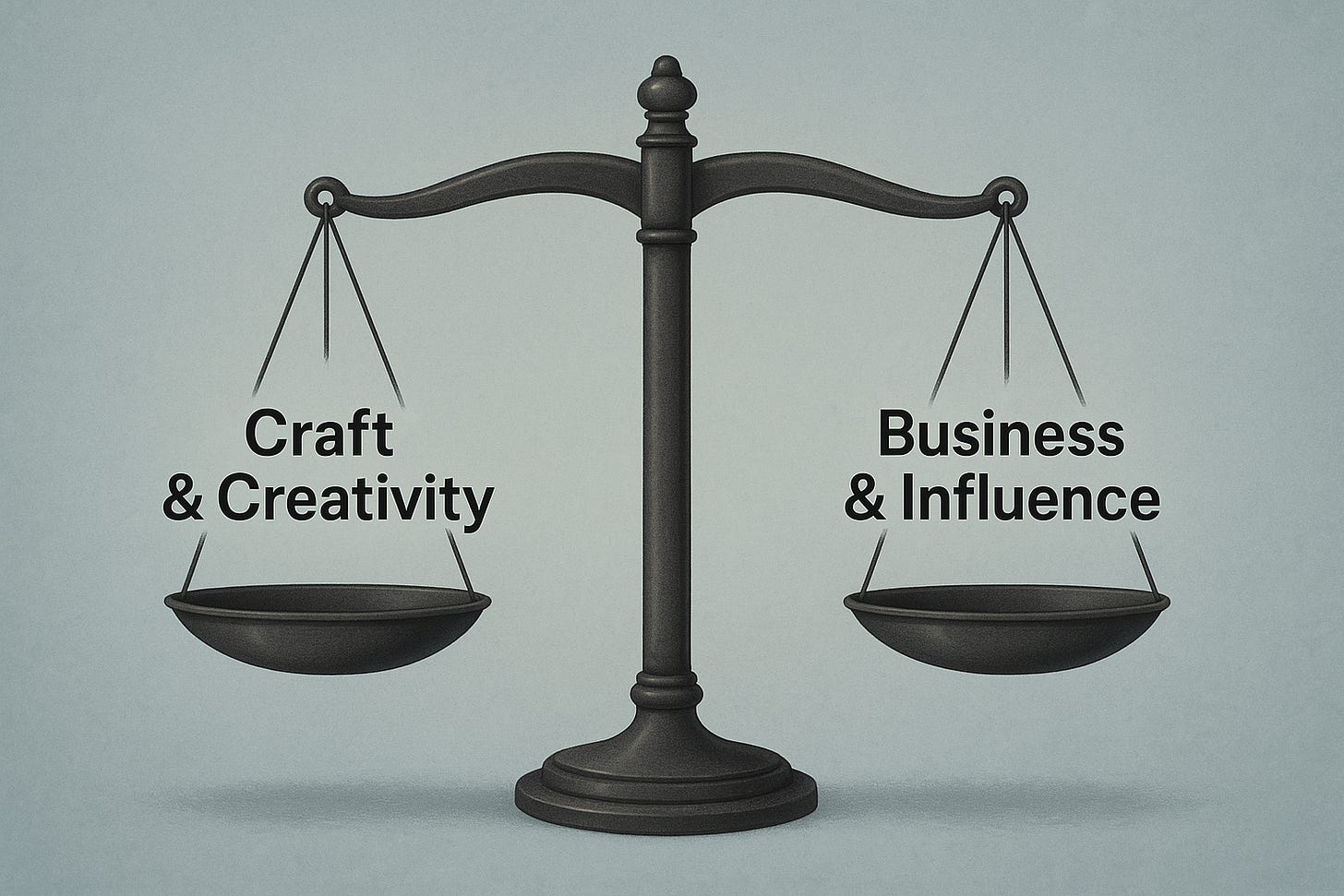From UX Designer to Product Strategist
Is the Jump Worth It?
Exploring the risks and rewards of crossing into product strategy.
For many UX designers, there comes a career crossroad. You’ve mastered craft, shipped features, maybe even led design projects. The next step isn’t always Senior UX Designer, sometimes the opportunity is to shift into product strategy.
But is the jump worth it? And what do you gain or lose when you trade wireframes for roadmaps?
In This Issue
What Product Strategy Actually Means
Why UX Designers Are Natural Candidates
The Upside of Making the Jump
The Risks and Tradeoffs to Consider
Stories: Designers Who Went Strategic
Signs You’re Ready (and Signs You’re Not)
UXCON25 Spotlight
Resource Corner
What Product Strategy Actually Means
Product strategy isn’t just “thinking bigger.” It’s about:
Defining where the product should go and why.
Balancing business needs, user insights, and technical constraints.
Making tradeoffs about what gets built now vs. later.
Instead of asking “Is this screen usable?” you’re asking “Is this product solving the right problem in the right market?”
Why UX Designers Are Natural Candidates
UX designers bring strengths that map directly into product strategy:
User empathy: grounding strategy in real needs.
Systems thinking: connecting dots across flows, not just features.
Facilitation skills: aligning PMs, engineers, and stakeholders.
In short: many designers already think strategically they just don’t always get the title.
The Upside of Making the Jump
Bigger influence: Your decisions shape roadmaps, not just screens.
Career growth: Strategy roles often pay more and open doors to leadership.
Broader skills: Exposure to finance, marketing, and market research expands your toolkit.
Future-proofing: When design roles are cut, strategy roles are often protected.
The Risks and Tradeoffs to Consider
Less craft: You’ll spend more time in meetings than in Figma.
Ambiguity overload: Strategy rarely has “right answers.”
Pressure: Your calls affect revenue, not just usability.
Credibility gap: Some orgs may still see you as “just design” unless you prove otherwise.
Stories: Designers Who Went Strategic
Case 1: A senior designer at a SaaS startup moved into product strategy, doubling their influence, but admitted they missed hands-on design.
Case 2: A researcher-turned-strategist used insights to reshape the company’s entire roadmap, proving the business value of UX skills.
Case 3: One designer tried the jump, hated the ambiguity, and happily returned to design leadership with new perspective.
Signs You’re Ready (and Signs You’re Not)
You might be ready if:
You get more energy from shaping direction than polishing screens.
You enjoy framing tradeoffs and explaining the “why” behind decisions.
You’re comfortable with incomplete data and messy debates.
You might not be ready if:
You still love the details of design execution.
You get frustrated when success is measured in outcomes, not artifacts.
You want clear, tangible outputs at the end of your workday.
13 Days UXCON25: Career Growth in Uncertain Times
Real conversations don’t happen on screens. They happen in the room — over coffee, in the hallway, during a talk that sparks something you didn’t see coming.
In 13 days, those conversations will be happening at UXCon25.
The only question is: will you be part of them?
🎟️ October 9. One day. One community. Your chance to connect for real.
Resource Corner
Final Thought
Moving from UX designer to product strategist is not just a title change. It’s a shift in identity.
If you love craft and detail, staying in UX leadership can be deeply rewarding. If you crave influence and direction, strategy might be your next move.
The jump is worth it only if it aligns with your energy, your values, and your vision of growth.







